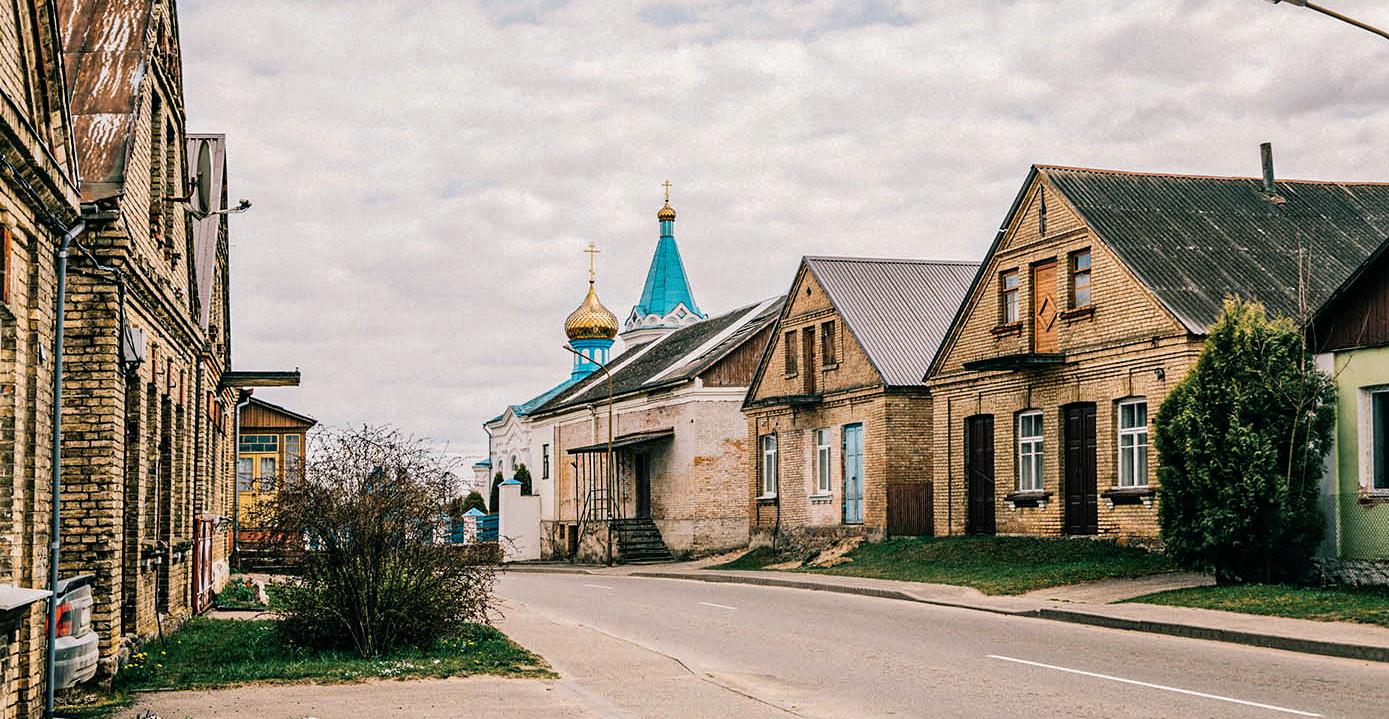
26 minute read
Golshany won't sink into oblivion
34TRAVEL.ME
Golshany is located in Oshmyany district of Grodno region. This cozy town with a rich history on the banks of the Golshanka River has miraculously preserved its aristocratic appearance and old structure. The settlement did not suffer from new buildings that stand out from the general architectural appearance, and the lay out – two main streets intersecting at right angles – has not changed for centuries. This is a typical Western Belarusian town. The residents of Golshany – and there are more than a thousand of them – are proud to live in an "open-air museum". Everything that is being done today to revive the former greatness of Golshany turns them into an iconic landmark. It can also be said that Golshany, thanks to the care of the state, again occupies a worthy place in the cultural space of Belarus.
Advertisement
It is interesting that 25 years ago, passing through Golshany on the 14th day of traveling along the state border of Belarus, we talked about this with a teacher, school headmaster Eduard Korzun. (beginning of notes in No. 4, 5, 6, 8…) The ethnographer took us to the school museum on his day off and gave an informative tour. On the way he said, rejoicing, that the livestock farm, which used to be located by the ruins of Golshany castle, had been moved to another place. He dreamed that the territory of the castle would be put tidied up. What, as you know, is being done today – with great support from the state. And he proudly talked about his school: 365 children studied there then, and at that time it was the largest in the district. He also talked about tourists who came to visit old Lithuanian cemeteries in the villages of Medriki, Krevo, Golshany, Lida, Novogrudok, Mir, Nesvizh.
He also said that he began to make an ethnographic collection at school in the 60s and 70s, and he mentioned local masters: "Ivan Astramovich was a master-sculptor here. Frants Serpeiko was a straw weaver." At the exposition he showed us the plates made in Oshmyany district, "which were used at weddings here." He showed both a wooden plow, and tools for flax processing, a knitted harrow. He told us with pleasure how he searched and found rarities: Once I was skiing and saw something interesting on the farm behind the forest. I took a school car to fetch it. There are large wooden mortars in the museum.The collector of antiquities saw one of them at a tumble-down house on the way to Minsk. "I noticed it: it stands, nobody needs it." I took it. The millstones were brought to the school museum from the village of Voloviki on the way from Golshany. We were greatly interested in shoes with wooden soles: such shoes were made by local craftsmen during the war. "Do you know what the word "holy" originally meant?" – the guide asked us. And he showed what was in every Belarusian house: a simple device for holding a rushlight. He also said that in Golshany there used to be last and shoe-making workshops, a bakery, a dairy and sausage production.
From Eduard Semenovich, we learned that in the old days Golshany was mentioned in the "Chronicle of Bykhovets" – one of the oldest historical documents that have survived to this day. He also named 1280 the year of the first mention of Golshany. It was the homestead of a very wealthy family of Golshanskies princes. The Golshanskies took part in the Battle of Grunwald in 1410, made various decisive decisions in the life of the Grand Duchy of Lithuania and were generally considered influential politicians. Sofia Golshanskaya, Queen of Poland and wife of Jagiello, Grand Duke of Lithuania and King of Poland, came from this princely family. Later, the Jagiellones became related to almost all European monarchs.
The first period of prosperity of Golshany, the local historian told us, was in the 14th-15th centuries, when the town was the center of a separate principality of the Grand Duchy of Lithuania. In 1525, Princess Elena Golshanskaya married the ViceChancellor of the Grand Duchy of Lithuania Pavel Sapega – and the territory became the property of this family. Under Sapega in the first half of the 17th century, everything developed rapidly. Far from the city, on a hill, a huge castle was built, surrounded by moats with water. At the same time, a Franciscan church was built in Golshany, which, unlike the castle, has been perfectly preserved to this day.
Mr. Eduard also spoke about numerous springs in Golshany, about three streams in the village itself. And the mounds stand along the forest. In 1996 the ancient settlement outside the city wasn’t explored, neither were the cultural layers near the ruins of the castle. Who and when founded Golshany is unknown. However, archaeologists have their own opinions on this matter. Now specialists of the Institute of History of the National Academy of Sciences of Belarus (in particular, Pavel Kenka) are exploring the hillfort and settlements of the 12th-14th centuries near the ancient settlement. They found out that the houses of that time were wooden, dugout, with stone stoves. The utensils and remains of various tools found there are made of clay and glass. We remember the inspiration with which Edurad Korzun spoke about tourists’ visiting Golshany in the future.
34TRAVEL.ME
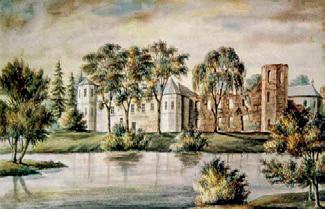
GEO-BY.COM
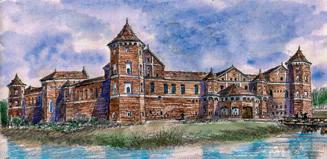
POSMOTRIM.BY
1. Golshany castle. Watercolor drawing by Napoleon Orda. 1876.
2. Sapega castle in Golshany, 12th century. (Waclaw Dmochowski. 1853.)

The Nothern Tower is a valuable tourist attraction along with the ruins of Golshany Castle
And now what he dreamed of has come true. We are sure that if enthusiasts do not just dream, but work in a certain direction, obsessively defend their ideas and proposals, this will certainly happen. Such was Eduard Korzun – a creative, outstanding man. He traveled not only around Belarus, but also visited various cities of the former Soviet Union: information about this is on the Internet, from his students. Eduard Semenovich knew that his work would not perish, everything that was done would be useful to descendants and those who would live after us. This is what he told his students: "Without knowing the history of own people, one cannot understand its present, and one cannot predict the future." Together with them, the teacher went on hikes, like we did, on foot: first to Novogrudok, then to Lake Svityaz. And sometimes schoolchildren hitchhiked with him from Golshany. When a lot of materials were collected, our interlocutor published the book "Golshany" (Minsk, Polymya, 1987). It is now on display in the museum.
We visited the Museum with Eduard Semenovich on Sunday, April 28, 1996. He passed away in 2001, and a year later, in 2002, the school museum was named after its creator. Today it is the Historical and Local Lore Museum named after Eduard Korzun, the year of its foundation is 1963. Last year the museum was visited by more than 2000 people, and in the first half of the current year – 1500. There were guests from Holland, Germany, Great Britain, Israel, China, Lithuania, Latvia, Poland, Russia and other countries. Now the undertaking of Eduard Semenovich

is continued by his wife, Mrs. Yanina. She carefully preserves the rich heritage of Golshany district, conducts excursions, and also trains guides. Once, a young primary school teacher moved to Golshany from a neighboring rural school to live with her husband, a historian (he was sent there after graduation from the Belarusian State University), and always supported his selfless work. Everything for Yanina Ivanovna, we read in an interview with the newspaper "Oshmyany Vestnik", began with a local lore study of a small exhibition of old coins, paper money and several photographs with students in 1962. The husband traveled to the villages, collected artifacts. He was convinced that it was impossible to live in Goltshany and not get acquainted with the history of the city. That is why he worked with such enthusiasm on the creaion of a collection, dreamed of a museum, and his wife helped as much as she could.
Thanks to government support, the ruins of Golshany Castle have now become a valuable tourist attraction, and one of the best-preserved towers, the North Tower, has already been erected. The unique exposition takes visitors hundreds of years back into the past and provides an opportunity to take a fresh look at the history of the Motherland. All three floors of the tower are no longer traditional exhibition halls, but a historical and artistic attempt to touch real history. In particular, our colleague Anna Kurak wrote about this in Narodnaya Gazeta in July this year. Undoubtedly, Golshany Castle is of great importance for the development of tourism in the region. It has been waiting for funding for decades, like many other attractions across the country. The work in Golshany was financed from three sources: the Presidential Fund for the Support of Culture and Arts, the State Program "Culture of Belarus" and the local budget. When we were preparing the notes, Sergey Zhilik, a methodologist for museums and historical and cultural heritage of the department of methodological work of Oshmyany district cultural center, told us about this. He explained, that before looking for funding for some kind of work in the ruins of the castle, it was necessary to prove that Golshany, the district and the country really needed them.
Now the successful cultural festivals of the Middle Ages, which have been held in Golshany since 2009, attract many people. Since 2011, preparatory work has been carried out in the archives, a concept has been developed, archaeological research and design have been done. Hundreds of people and dozens of organizations were involved in the process. Only in 2015, conservation, restoration and construction began. And with its help, Holshany managed not only to preserve the historical and cultural value, but also to get the prospects for the future. New vacancies were created for museum specialists, new streams of customers supported local businesses: cafes, hotels, shops.
Here are the ruins... In fact, Golshany Castle, even destroyed, is a valuable dominant which attracts visitors of this. But, of course, Oshmyany territory is rich in other sights: architectural, memorial, cultural. Wherever you go, you will see something new, unknown, sometimes mystical. By the way, Sergey Zhilik explained the details of the castle restoration: "The ceiling, floor, walls and fireplace are made using the probing technique, so everything that we see is not a fantasy of a modern restorer. This approach reveals all possible options for decoration of the castle inside. The original archaeological finds are successfully combined with the restored interior elements, portraits of the owners of the town and images of the castle itself over the centuries complement the stories of the guides. Visitors climb a modern metal staircase that sits on the same spot where the wooden one used to be. From above one can see both the remains of the majestic palace and the landscapes of contemporary Golshany.
And they are not ready to rest in Golshany. Sergey Zhilik believes that it is important to preserve what there is, since different eras can be traced back in the architecture of the castle. This is masonry, windows, and passages between rooms. "We do not just know that the castle was rebuilt more than once, we see it and want to show it to everyone. Therefore, if there was
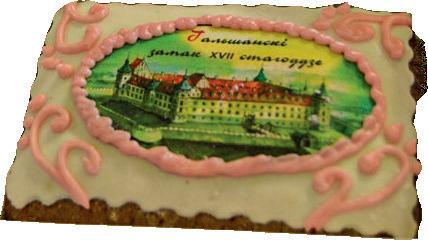
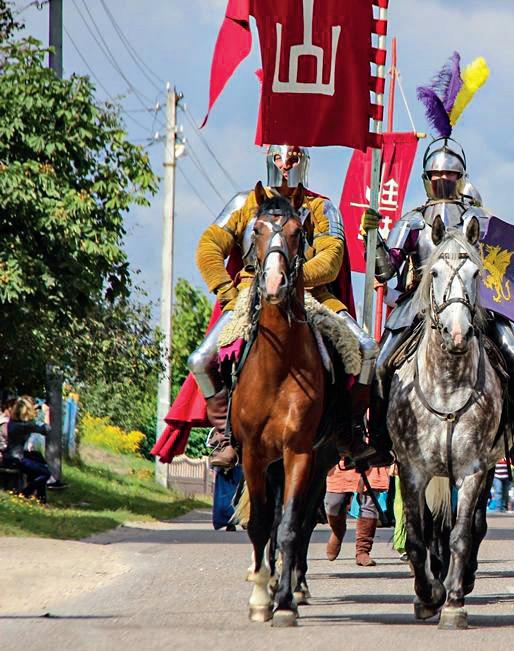
Famous Golshany gingerbread
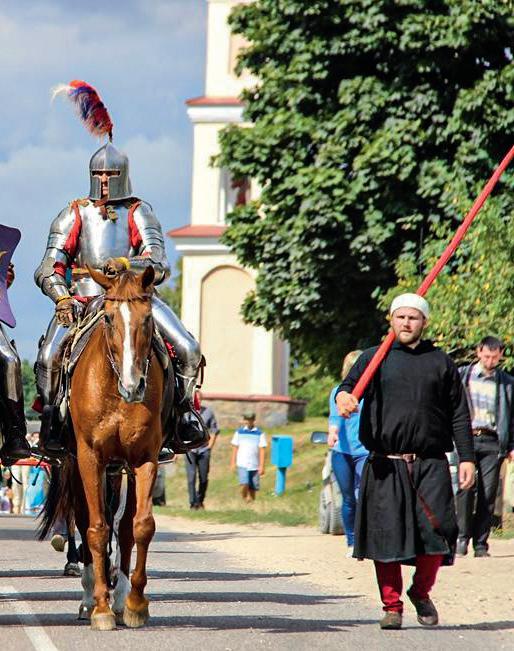
For a holiday in Golshany Castle
For holidays and festive evenings in Golshany Castle, confectioners of Oshmyany branch of Grodno Regional Consumer Society traditionally bake branded sweets: gingerbread. The Sapegas princes loved to surprise their guests, including with gastronomic surprises. Now gingerbread is a kind of dessert available to everyone, and in the 17th century only rich people could afford sweet smelling glazed pastries. Today everyone can buy a sweet handmade souvenir baked to the old recipe. Golshany gingerbread should not be confused with others: the castle, the main attraction of the city, is depicted on it.
a choice between "to make a beautiful picture" or "to preserve an authentic look", without any hesitation we chose the second option."
And what is being done in Golshany now, we asked Sergey. The next step is to build the floor in the castle courtyard. The columns have already been restored there, the arched vaults have acquired an aesthetic appearance. The backfill is done. They also need to make a hard surface, lighting, and the space of the castle will be used for various cultural and educational events. We asked if there were plans to improve the spring, the Korabel stream, which flows out from under the Castle Hill? I think, the interlocutor answered, and it’s turn will come. Meanwhile, design work is underway to improve the areas adjacent to the castle. Convenient paths for tourists have already been made, there is a large parking lot. A visit center was opened: it is a branch of Oshmyany Museum of Local Lore named after Franciszek Bohuszewicz. And the opening of the exposition was in May. In general, the possibilities of Golshany tourist cluster are significant, it is actively developing. Pavel Kenko, an archaeologist from Minsk, constantly explores Golshany ancient settlement. There is a wooden flooring, information stands are installed. Historical images of different times are presented: what the settlement looked like, how it was pictured, photographed. Local legends are also presented. The excavations are carried out by specialists from the Institute of History of the National Academy of Sciences of Belarus with the assistance of volunteers.
Work on the Castle Hill with the ruins of the castle is going on at full speed, and today it is a clear example of the fact that we can do a lot for the good of the Motherland – in unity, combining forces and means. And in Belarus it is important not only to preserve the historical and cultural heritage but to use this powerful potential in work with young people. After all, love for the Motherland begins with knowledge of its history, language and culture. In addition, projects such as the Golshany one are a powerful impetus to the development of the entire region.
During the preparation of the notes we also talked with the guide Tatyana Zavadskaya. She is from Golshany, a student of Eduard Korzun: he taught her history, under his tutelage she conducted the first excursions in the school museum in high school. She graduated from school in 2001. Tatyana is pleased to state that Golshany project is being implemented. Only in the summer of 2021, at the end of August, more than 6,000 tourists visited it, and the tourist season is going on. Tourists are not only from Belarus: they come from Vilnius, St. Petersburg, Poland, some in groups. There are also individual visits: when, for example, people come to their relatives, they come to look at the present state. And they remember what it was like before.
We remember well our hiking visit to Golshany. We also remember asking Eduard Semenovich: what is the first thing to see in Golshany? He advised us to go to the ruins of the castle of the princes Golshanskies and Sapegas. We went there along Sovetskaya Street. We remember sitting near the ruins, where we even made campfire tea. And the old brick which survived in the ruins was well-warmed by the April sun. We were surprised: it is so many years old, and still it survived... It was a beautiful April day. A stork circled high above the ruins. And only singing of birds broke the deep, majestic silence of the castle. We also talked about whether it was possible to restore the former beauty, to show its scale, to give descendants an idea of the power and greatness of the possessions of the princes Golshanskies and Sapegas... We did not know then that all this would happen. And that the traditional "Evening parties of Sofia Golshanskaya" will be held in Golshany as well as different festivals. And it will seem that time is turning back, and the castle of magnates lives a normal life – dancing couples whirl at magnificent balls to the magic sounds of music, knightly tournaments fascinate... And the air smells of famous Golshany gingerbread, baked to an old recipe. As the story says, the Sapegas loved to surprise guests with gastronomic delights.
Ivan and Valentina Zhdanovich
THERE ARE PEOPLE LIKE THE SUN
In honor of the jubilee of Nina Lomanovich, People's Artist of Belarus, State Prize Laureate, holder of the Order of Francysk Skaryna, Chief Choirmaster of the Bolshoi Theatre, who has served there for 45 years, one of the most powerful choral works by Giuseppe Verdi – "Aida" was performed. And on the eve of the opera "Carmen" by Georges Bizet, which was also performed in honor of Nina Iosifovna, an exhibition illustrating her career was opened in the foyer.In fact, every Bolshoi Theatre opera is performed day by day in honor of Nina Lomanovich. After all, in every of them her creation, the choir, sings! But is not enough to say that it sings. This is what the hero of the day said about the choir: "Now the choir has grown professionally so much, it has become so mobile and flexible that the director has the opportunity to do absolutely incredible things with it on stage. The choir artists participate in stage battles, they dance, and pray, do round dances, and, as in the finale of "The Gray Legend", fall on their backs and lie in complete darkness. They do all this while singing! I think this is top class."Whatever performance of the Bolshoi we mention, in each the choir is at the height of professionalism. Each choir singer has his/her own voice. But these voices must be combined so that they sound in balance, harmonious, and at the same time do not lose their individuality. Moreover, at the Bolshoi Theatre, the singers are also actors, each of whom, as we have seen more than once, plays a significant role. You just need to take a closer look.One of the latest premieres that impressed us with the most beautiful music of Vladimir Soltan was the opera "The Wild Hunt of King Stakh" staged by Anna Motornaya. When the rehearsals began, the question arose whether ballet dancers should be involved in the performance. Nina Lomanovich spoke about this at a press conference before the closing of the theatrical season on the eve of the premiere. It was decided to do without them, since the choir artists could cope with the choreography: – Thank God, our choir is mobile, young. This is a rare choir, and we should appreciate this ability! The singers have a great workload, but they like it, they try to do everything that the choreographer suggests. Olga Kostel put a lot of effort into it. Big thanks to her, she knows how to work with big groups of performers, and in many ways the crowd scenes are her merit. Nina Iosifovna recalled other pleasant moments from the choir's past achievements: – When we brought "The Wild Hunt of King Stakh" to the Bolshoi Theatre of the USSR
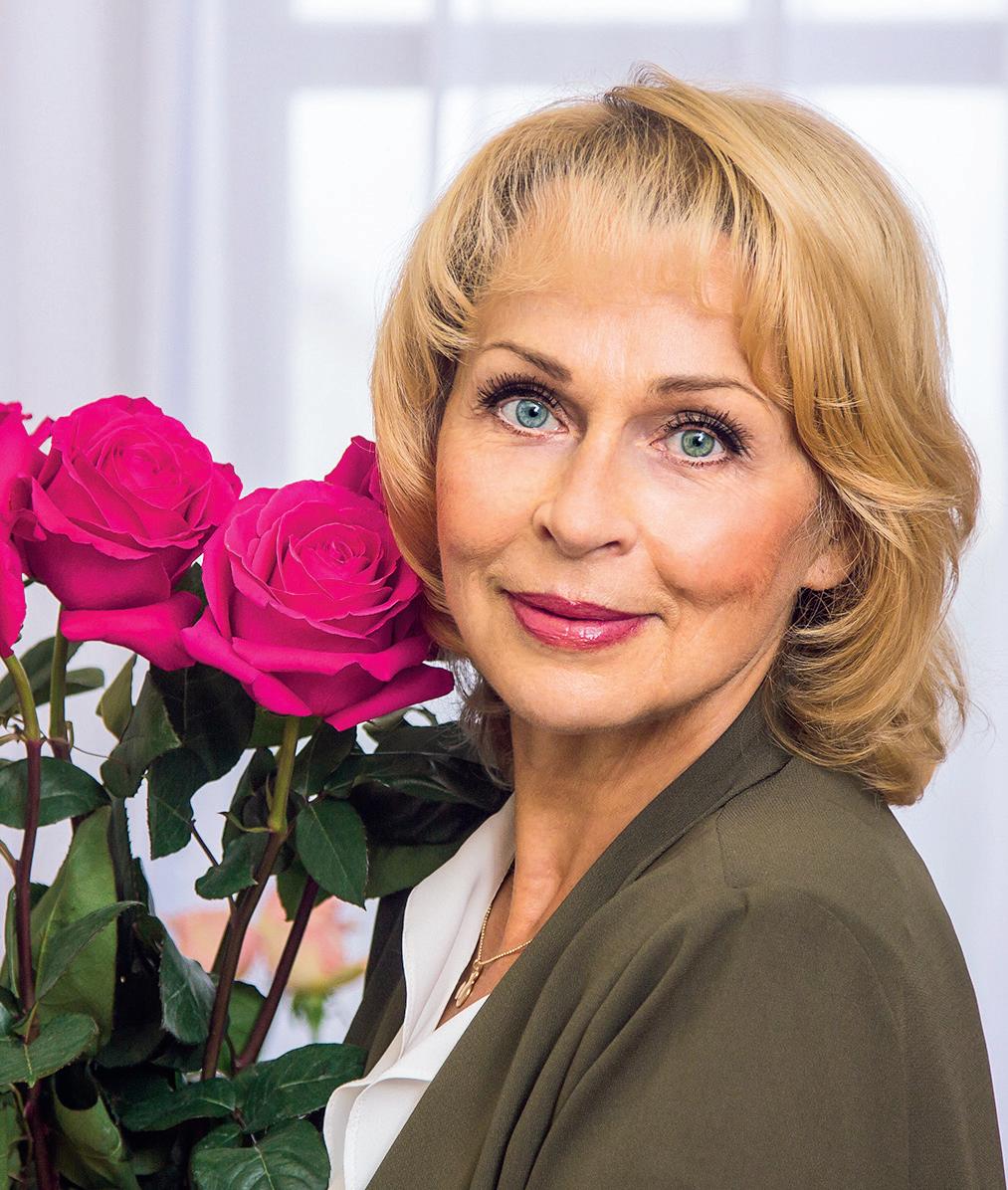
(staged in 1989 – Ed.), the famous People's Artist of the Soviet Union Natalya Shpiller wrote a long, laudatory article about our performance, – Nina Lomanovich recollects. – And in this article, I think there was a huge compliment to the choir! Shpiller wrote: "Only the ballet was a little sluggish!" And there was no ballet! My God, I was so glad that our choir had done this all. And another interesting moment came to her mind at the press conference. – Once there was a soloist Mikhail Rysov. He had been working in Italy for a long time. He came to our theatre and watched the choir move in "Eugene Onegin". He looked and asked: "Are the ballet performers dancing and singing?" And I answered him: "This is a choir that dances and sings!" And he answered: "You don’t say!" And here is what Anna Motornaya, the director of the play, said. – I am incredibly grateful to Nina Iosifovna Lomanovich, who, when I asked if we could do without ballet dancers and stage the whole performance by the choir, said: "Of course! We can do everything!" Actually, I had no doubts. This is such an amazing team. In terms of professionalism, the choir of the Bolshoi Theatre of Belarus is one of the best today. Nina Lomanovich expresses her praise to the choir artists with restraint: not bad! But everyone knows that such praise from her is the highest. It is also known that she is a strict leader, as they say, keeps a strict hand over the choir. But at the same time, she notes that this is her family. And no wonder! Indeed, since 1976, Nina Iosifovna has been the choirmaster, and since 1993 – the chief choirmaster. And everything we hear and see on the stage of the Bolshoi Theatre, feel empathy for , testifies to the fact that complete harmony reigns in her family.
What is a choirmaster's job? Does Nina Iosifovna remember her very first day at the theatre? Whom of the conductors does she still admire? What does it mean to head a huge choir? And this is no more, no less than 70 people! Does she regret, even for a minute, that she did not become a doctor, but devoted her whole life to the theatre? We received answers to all these and other questions at the meeting of Nina Lomanovich with the audience and journalists, which took place in the Chamber Hall before the start of "Carmen" performance.
No, Mrs. Lomanovich does not regret at all failing to become a doctor. She explains why. "Brilliant scores and music, gorgeous voices, incredible performance still rapture me !" – Nina Iosifovna admits. She experienced this delight even when she began studying at the conservatory (Belarusian State Academy of Music, class of assistant professor, People's Artist of Belarus Aleksey Kogadeev – Auth.).
She says: – When I was in my third year, my teacher Aleksey Kogadeev involved me in the work on the opera "Lohengrin" by Richard Wagner, and I was graduating with my own performance "Don Pasquale" by Gaetano Donizetti. This suggests that Aleksey Petrovich was not afraid to take risks, he let us work on our own. As a teacher, he never forced students to study, he adhered to the principle: if a person wants, he/she will attend and study. It is interesting that when I started teaching, I had exactly the same system. If a person wants to learn something, he/ she will definitely do it. I am very proud to be a student of Aleksei Kogadeev! We can say that he is a "grandson", and I am a "great-granddaughter" of the outstanding Russian choirmaster Mikhail Georgievich Klimov! After all, Kogadeev finished his postgraduate studies in St. Petersburg under the supervision of the choirmaster and teacher, professor, People's Artist of Russia Elizaveta Petrovna Kudryavtseva, who used to be a student of Klimov. And when Aleksey Petrovich, very young, arrived in Minsk, he was immediately appointed chief choirmaster at the Belarusian Bolshoi, because before him there was no choir leader with a special choirmaster education. And his school of choral conducting is really amazing: without "fake moves", a very intelligible hand. Aleksey Petrovich was an educated person, he read a lot and liked to introduce us to novelties in literature. At that time, political classes were supposed to be held in the theatre, and during these hours he shared his thoughts about what he had read, and also introduced beautiful and wise quotes from great people... It was Kogadeev who taught us that one should listen to and see a variety of musicians.
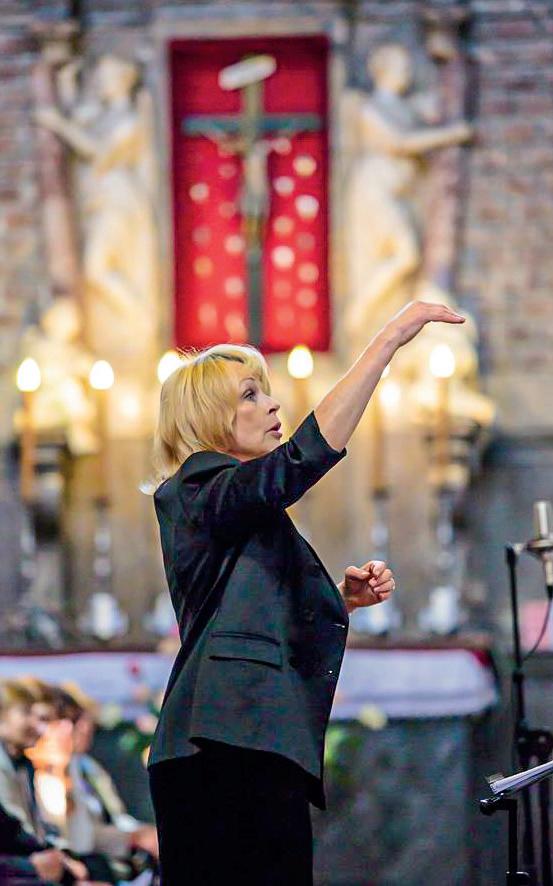
Because some of them definitely have something that others don’t. Therefore, it is not without reason that they say: a musician learns all the life. That’s what I’am doing...
The meeting with Nina Lomanovich was permeated with such warmth that it seemed that she emanated light. In dealing with people, she is a very likeable person. No wonder friends, acquaintances, colleagues say: Nina Lomanovich is like the sun.
That evening questions from the audience came one after another. We also learned why the choir is a headache for any conductor. Mrs. Lomanovich replied: "When Mstislav Rostropovich was just starting to study conducting, before a performance he asked Austrian conductor Herbert von Karajan: "Who should I keep my eyes on first of all: soloists, choir, orchestra?" "The choir," – the Austrian genius replied. After all, this is a large group of singers who are scattered around the stage, but who must breathe as a single organism. Therefore, the choirmaster must train his artists in such a way that the conductor feels comfortable. Therefore, I always try to do my job to the full..." Which she does day in and day out, possessing an incredible ability to work.
How does Nina Iosifovna manage to keep so fit? She answered this question briefly: – The main thing in life is not to envy.
Nature did not deprive her of good looks as well as beautiful speech, sincerity, and wonderful memory. Among the vivid memories of the chief choirmaster of the Bolshoi Theatre, there is one that she shared with us at the meeting. This is the opinion of the People's Artist of the USSR, the great opera singer and director Ivan Kozlovsky, who expressed it to her after one of the performances during the Bolshoi tour in Moscow. They met backstage. Kozlovsky took her hand in his and said: he had never heard a choir sound like this...
You should have seen how Nina Iosifovna spoke about this. She was overwhelmed with pride in her choir, a powerful expressive tool in opera. After all, it is both the main character, the interpreter of events, and the background for them, a tool for creation of certain moods, and much, much more. Valentina Zhdanovich
Photo credit: Bolshoi Theatre of Belarus


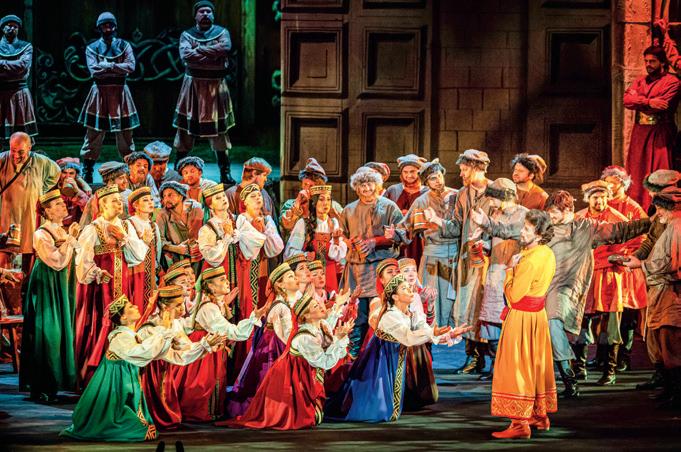
ON THE WAY TO SPIRITUALITY, HARMONY

This autumn the scientific and educational international expedition "The Road to Shrines" with the Holy Fire from the Holy Sepulcher has departed from Minsk along the chosen route for the twenty-eighth time. The group which is walking to the cities and villages of the country has not changed since the beginning of the first expeditions: famous priests, historians, writers, artists. Their goal is to visit the most important for our history places, to learn about not well-known facts and discover something about themselves during meetings with people, to convey new knowledge about the past of these places.
The unifying symbols of the expedition since the first day are the icon lamp, lit by the Holy Fire at the Holy Sepulcher in Jerusalem, and the miraculous icon: it was found on the Holy Field near Baranovichi, where many wars of past centuries had left their traces. In the cities and villages, the lamp and the icon are greeted with the greatest respect: with their help priests consecrate schools, hospitals, educational institutions, family orphanages. After a joint service, the fire from the icon lamp is handed on to the parishioners’ candles who carry this light and warmth to their homes as a symbol of the unity bequeathed by our ancestors.
This year "The Road to Shrines" expedition passed through Minsk and Brest regions. Let us remind you that its participants have covered tens of thousands of kilometers over the years.
To get to those who welcomed the expedition we rode in a bus from one settlement to another, then walked and moved along with the locals in a procession. From morning to evening, in cities and villages, joint services were held in local churches, creative meetings in clubs and palaces of culture were conducted as well as writing lessons in schools. Our route and landmarks did not go unnoticed: near the memorials and mass graves of soldiers, partisans, innocent victims of the war, the priests together with all those present held memorial services. Exploring the past and the role of the church in our common history, the members of the expedition visit places connected with the lives of famous priests, believers who left their mark in the appreciative memory of their descendants. For example, this year, a stop was made on the route in the district center Uzda to visit the burial place of holy Martyr Mikhail Novitsky. The respect was paid to the famous priest Peter Grudinsky in his native village, the current agro-town Timkovichi of Kopyl district. The participants also visited natural landmark Izbiysky Bor of Gantsevichi district: in ancient times, a miraculous icon of the Mother of God was found here. Whatever place the expedition visited, its members and locals planted young trees, which annually expand the All-Belarusian Garden of Prayer. This tradition appeared long ago. Many hundreds of apple, oak and birch trees have been planted over the years in main squares, squares near temples and around memorials. The AllBelarusian Garden of Prayer is another valuable, living symbol of the expedition, which is forwardlooking. It will remind our descendants of our current path to spirituality, harmony, and unity. Evgeny Pyasetsky Photo credit: the author
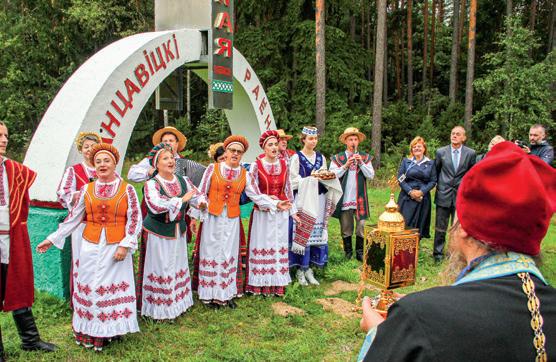

VIKTOR MIKHAILOV
COUNTRY
IN THE HEART OF EUROPE
No. 5 (1052), 2021 Magazine for you Беларусь. Belarus belarus Politics. Economy. Culture ISSN 2415-394X No. 6 (1053), 2021 Magazine for you Беларусь. Belarus belarus Politics. Economy. Culture
ISSN 2415-394X
Беларусь. BelarusNo. 8 (1055), AUGUST, 2021
ISSN 0320-7544 MAGAZINE FOR YOU BELARUS

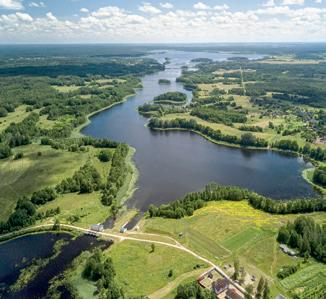
Politics. Economy. Culture
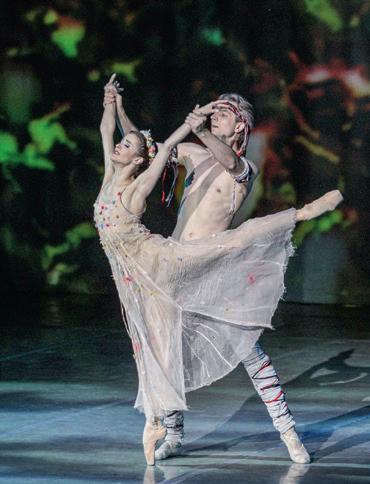

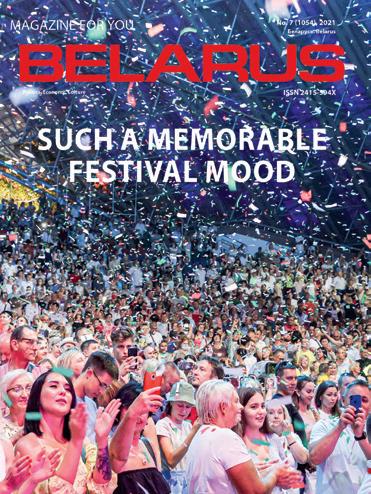
wElComE tourist!ViVat Bolshoi!

THOROUGH CONVERSATION ABOUT THE IMPORTANT WORTH ITS WEIGHT IN GOLD




